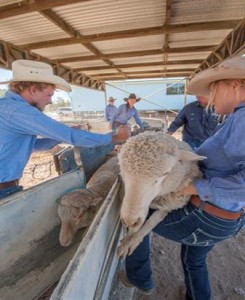Latest listings on Jobs Central recruitment page:
- Station-hand – Cattle/sheep, Dubbo district (Toongi Pastoral)
- Livestock Manager-Cattle/Sheep-NW NSW (Agricultural Appointments client)
- Purchasing Officer – Meat/Livestock (Rimfire Resources client)
- Policy Officers – Australian Meat Industry Council (Agricultural Appointments client)
- General Manager Sales & Marketing (Allied Beef)
- Feedlot Pen Riders – Hay, NSW (Ag Workforce client)
- Stockman/Stationhand (Amungee Mungee NT)
- Feedlot Livestock Hand (Iranda Beef, SA)
- Livestock Manager (Smithfield Feedlot, Qld)
- Commercialisation Manager (Sheep CRC)
- Operations Manager – Wallumba Feedlot (MDH Pty Ltd, Qld)
- HR & WHS Manager – Corporate cattle industry stakeholder (Rimfire Resources client)
Click here to access these and other exciting meat and livestock supply chain jobs currently listed on Jobs Central.
EMPLOYEE engagement levels can have a significant impact on the productivity and overall success of operations in any industry and because most projects rely on continuity and collaboration between workers with different kinds of skills, it is necessary for them to be fully engaged in order to be most efficient.
Consequently, many managers will be looking to increase the engagement of their workers and, thereby improve overall outcomes.
The levels of engagement in Australia
Employee engagement is a concern for employers everywhere, but thankfully, Australians have been shown to be some of the most engaged workers in the world.
According to a 2013 global survey conducted by Gallup, 24 percent of Australian and New Zealand employees reported that they felt engaged, coming a close second to the US and Canada at 29pc. Although these numbers are still low, it is a positive insight for Australian employers.
While these figures are comparative on a global scale, Rob Bebbington, the Australia and New Zealand human capital business leader at Mercer, says that there are definitely areas where engagement could be improved.
“While Australian employers are getting many aspects of the employee engagement equation right, they’re not making the most of the capabilities and ambitions of many groups within their organisation, which means they are potentially losing productivity and worst case scenario, key talent, which inevitably hits the bottom line,” he said.
What can you do to improve levels of employee engagement?
There are a number of approaches that managers can take to enhance how engaged their employees are, including approaching staff members individually.
“Employers need to consider all aspects of the employment relationship and different stages of their employees work lifecycle. Our priorities and motivations change in life as we age and the same thinking has to be applied to the workforce,” said Mr Bebbington.
Other methods for managers to try include acknowledging the hard work and accomplishments of employees include measuring engagement levels often and asking for feedback, and creating a sense of purpose or community with the work.
Getting to know your employees will also help to build relationships between managers and employees and can have a big impact on motivation and engagement.
In addition, having engaged employees can also be influenced by recruiting the right people for the job, to ensure that their values and motivations are going to align with your team.
Source: Meat Processors Pty Ltd


HAVE YOUR SAY